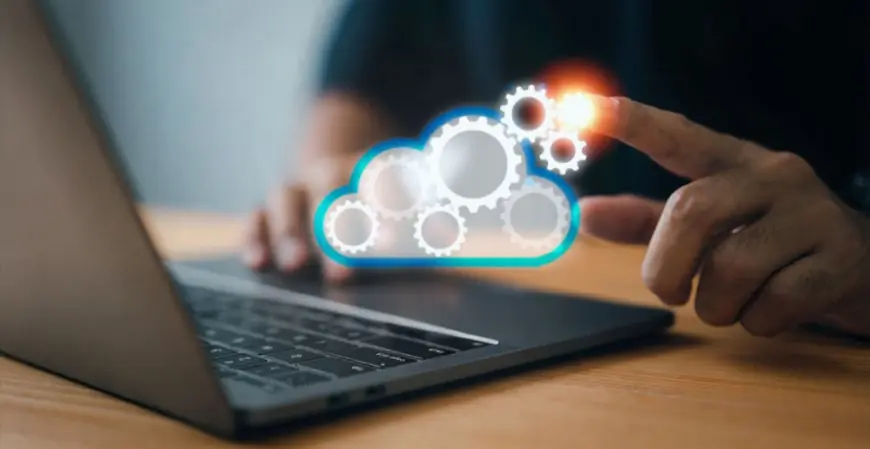Managed Desktop Services: Enhancing Productivity and Security
Learn how Managed Desktop Services improve productivity, enhance security, and reduce IT costs for businesses.

Introduction
In today’s digital-first business environment, managing desktops, applications, and user devices across an organization has become increasingly complex. To address these challenges, many companies are turning to Managed Desktop Services—a proactive IT solution designed to optimize performance, enhance security, and reduce costs.
By outsourcing desktop management to an experienced IT provider, businesses can focus on growth and innovation rather than day-to-day technical issues.
What Are Managed Desktop Services?
Managed Desktop Services refer to the outsourced management of desktops, laptops, and end-user environments within an organization. Rather than relying solely on internal IT staff, businesses partner with service providers who oversee every aspect of desktop functionality.
Key services often include:
-
Software installation and configuration
-
Operating system updates and patch management
-
Antivirus and endpoint protection
-
Data backup and recovery
-
Remote troubleshooting and help desk support
-
Real-time monitoring and performance optimization
By using a proactive approach, problems are avoided before they cause operational disruptions.
Benefits of Managed Desktop Services
1. Stronger Security
Cybersecurity threats continue to rise, and endpoints are often the most vulnerable. Managed services ensure that systems remain updated, patches are applied promptly, and threats are monitored in real time.
2. Reduced IT Costs
Large in-house teams are no longer necessary when desktop management is outsourced. Businesses pay a predictable monthly fee while reducing downtime and expensive emergency fixes.
3. Increased Productivity
Employees spend less time dealing with IT problems and more time focused on business objectives. With remote support, issues are resolved quickly without interrupting workflows.
4. Scalability
As businesses expand, managed desktop solutions can scale to support additional users, devices, and applications without heavy investments in infrastructure.
5. Expert Support
Organizations gain access to specialists who apply the latest best practices, tools, and compliance measures to keep systems optimized.
Managed Desktop Services vs. Traditional IT Support
The difference between traditional IT support and managed services lies in the approach:
-
Traditional IT Support: Usually reactive, problems are dealt with after they arise.
-
Managed Desktop Services: Proactive—issues are prevented through monitoring, automation, and strategic planning.
This proactive approach guarantees long-term stability, boosts dependability, and decreases downtime.
Industries That Benefit the Most
While all industries can benefit, certain sectors see particularly strong advantages:
-
Healthcare – Meeting HIPAA compliance requirements and securing patient data.
-
Financial Services – Protecting sensitive financial information against cyber threats.
-
Education – Managing large numbers of devices for students and faculty.
-
Small and Medium-Sized Businesses (SMBs) – Gaining enterprise-level IT expertise without high costs.
Best Practices for Adopting Managed Desktop Services
Businesses implementing these services should follow several best practices:
-
Evaluate Business Needs – Identify IT challenges such as downtime, compliance gaps, or user frustration.
-
Choose a Trusted Provider – Select a partner with proven expertise in security, compliance, and proactive monitoring.
-
Define Clear Service Agreements – Establish expectations for response times, updates, and reporting.
-
Provide Employee Training – Ensure staff understands how to use support channels effectively.
-
Review Regularly – Track performance indicators and modify offerings to satisfy changing demands.
Overcoming Common Challenges
Transitioning to Managed Desktop Services can bring challenges, but they can be addressed with proper planning:
-
Change Resistance: Employees accustomed to in-house IT may be hesitant. Clear communication helps ease the transition.
-
Cost Concerns: While outsourcing has upfront costs, comparing them against downtime and IT overhead often reveals long-term savings.
-
Vendor Dependence: Businesses may worry about reliance on a third party. Choosing a transparent provider with strong service-level agreements mitigates this risk.
Why Utah Businesses Are Embracing Managed Desktop Services
Utah’s rapidly growing business environment—particularly in technology, healthcare, and finance—demands reliable and secure IT operations. Companies across the state are turning to Managed Desktop Services to protect data, reduce downtime, and support employees in both office and remote settings.
This approach allows businesses to stay competitive while maintaining compliance and efficiency.
Conclusion
Managed Desktop Services are no longer just a convenience; they have become a strategic necessity for modern organizations. By proactively managing desktops, strengthening security, and reducing IT costs, businesses can operate with greater efficiency and confidence.
Whether it’s a small business looking to scale or a larger enterprise navigating compliance challenges, Managed Desktop Services provide a reliable solution for long-term growth and stability. For organizations in Utah and beyond, adopting this model ensures that technology remains an asset rather than a burden.
What's Your Reaction?
 Like
0
Like
0
 Dislike
0
Dislike
0
 Love
0
Love
0
 Funny
0
Funny
0
 Angry
0
Angry
0
 Sad
0
Sad
0
 Wow
0
Wow
0



















































